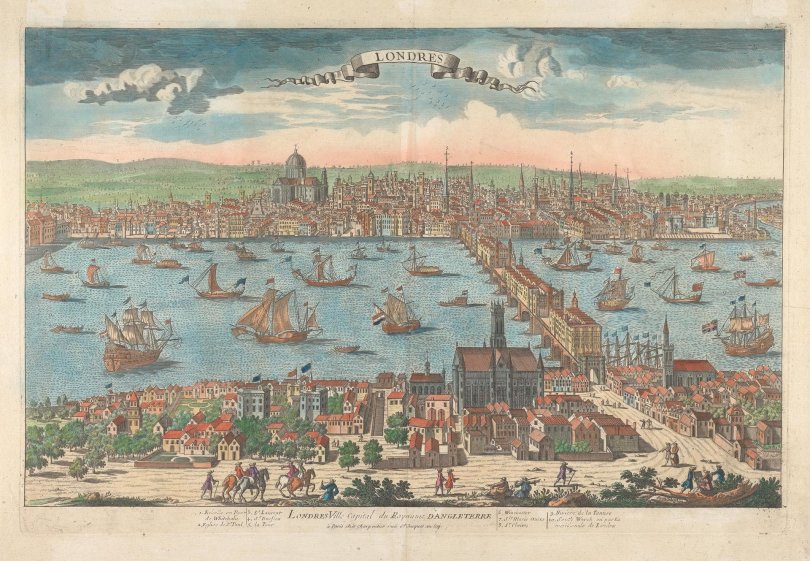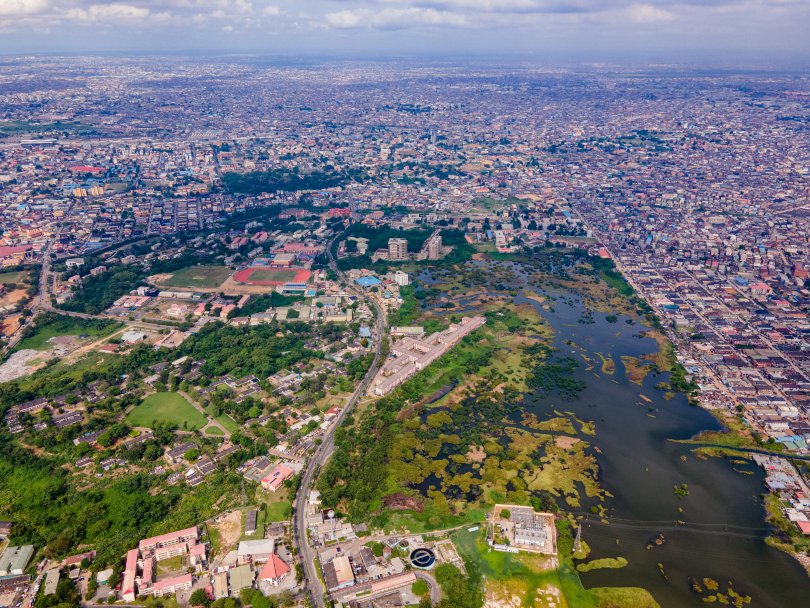Urbanisation is usually viewed as the result of rising productivity that attracts workers to cities. Economists Liam Brunt and Cecilia García-Peñalosa argue that in order to understand the beginnings of the Industrial Revolution, it is important to look at this phenomenon from the opposing perspective: productivity gains and growth are fostered by the exchanges of knowledge taking place within cities.
According to the United Nations, more than half of the world's population lives in urban areas, amounting to 4.2 billion people1. The trend is expected to increase in the coming decades, to include 66% of the world's population by 2050. Cities are at the heart of economic growth, generating more than 80% of global GDP. Economists have extensively written about the fact that workers are attracted to cities where they can benefit from higher wages, and urbanisation has long been seen as a consequence of economic growth. On closer examination, however, the link between urbanisation and growth may be more complex.
Economists Cecilia García-Peñalosa and Liam Brunt have combined elements from development economics and economic geography, using a new model to explore the links between urbanisation and innovation: that is, the creation of new ideas and technologies. Their goal is to understand how the two factors may have interacted at a time when economic growth began to gain momentum at the dawn of the Industrial Revolution. Although the conditions in the first countries to industrialise were different from the situation of low-income countries today, this study could nevertheless shed light on the advantages of urbanisation in countries that are still predominantly rural.
- 1United Nations, Department of Economic and Social Affairs, Population Division (2019). World Urbanization Prospects: The 2018 Revision (ST/ESA/SER.A/420). New York: United Nations.
More social interactions, more ideas
The researchers looked at Europe, and in particular England, as data show an increase in the rate of urbanisation and in the size of cities prior to the Industrial Revolution. Their model considers an economy with an agricultural sector and a manufacturing sector, with production taking place, respectively, in rural and urban areas. Two mechanisms come into play. First, the manufacturing sector is described as traditional craft activity, distinct from modern industrial production. The productivity of manufacturing workers depends entirely on the number of ideas each of them possesses, and this productivity will rise as long as there is an increase in the number of ideas available. This results in higher wages and prompts agricultural labourers to leave the countryside for a life in the city. Therefore, an increase in the number of ideas leads to more employment in the manufacturing sector and a higher rate of urbanisation.

London. Capital of the Kingdom of England, 1768 © Yale Center for British Art/Wikimedia Commons
The second element is the assumption that ideas are transmitted between individuals by way of imitation. An individual can access an idea by encountering a person who has the idea already. An individual can also generate a novel idea by observing the ideas of others or by learning about other people's activities. As such, the emergence and dissemination of ideas are closely linked to social interaction. In cities, where population density is high, there are inevitably more encounters than there are in rural areas, which favours both imitation and innovation.
The combination of these two elements leads to the creation of a virtuous circle. An initial increase in the size of towns results in more social interactions, and therefore more ideas, attracting rural workers and increasing urbanisation further. The result is an acceleration of innovation and thereby economic growth.

Picture by Dmytro on Adobe Stock
A key to the development of Western Europe
While China is considered by historians to be the most technologically advanced country in the Middle Ages, urbanisation rates remained low throughout the modern era2, as shown by the economist Angus Maddison3.In contrast, Western European countries experienced a marked increase in their urban populations in the early modern period, with an urbanisation rate of around 5% in 1700, more than double that of China.
England’s high urbanisation rate is remarkable even when compared to other European countries. Long before the Industrial Revolution, this rate had been growing rapidly: between 1600 and 1750 the rate of urbanisation tripled, rising from 6% to 18% of the total population4. Urban growth was therefore occurring well before the major economic changes associated with the Industrial Revolution. Brunt and García-Peñalosa maintain that this early urbanisation fostered innovation and the dissemination of ideas, and thus produced the fertile breeding ground for the Industrial Revolution that was to follow.
- 2The modern era is a historical period between 1492, with the discovery of America, and 1789, at the time of the French Revolution.
- 3Maddison, Angus (2007). Contours of the world economy 1-2030 AD: Essays in Macro-Economic History. Oxford : University Press.
- 4Wrigley, Edward A., Davies, R. S., Oeppen, J. E., and Schofield, R. S. 1997. “English population history from family reconstitution, 1580–1837”. Cambridge : University Press.
Africa on the way
It is interesting to link the researchers' conclusions on the subject to the runaway urbanisation taking place on the African continent over the last thirty years. Since 1990, the total number of African cities has doubled, and their population has increased by nearly 500 million. According to the OECD, data collected for more than 4 million individuals and businesses from 2,600 cities in 34 African countries, this recent urbanisation wave has had a positive impact on economic performance5.
- 5OECD/UN ECA/AfDB (2022), Africa’s Urbanisation Dynamics 2022: The Economic Power of Africa’s Cities, West African Studies, OECD Publishing, Paris.

Picture by Mujib on Adobe Stock. Lagos (Nigeria) compte plus de 15 millions d’habitants en 2023.
The percentage of workers in skilled jobs reaches about 50% for men and 25% for women in large and medium-sized cities, compared to only 18% and 11%, respectively, in rural areas. Cities also provide easier access to services. For example, children in large cities receive on average almost five more years of schooling than children in rural areas. This creates an environment which favours the emergence of new ideas.
Urbanisation in developing countries - whilst facilitating economic growth - must also meet the environmental and socio-economic challenges of this century. New parameters have now entered the equation: if cities are to continue to offer their inhabitants long-term economic opportunities, they will also have to be resource-efficient and reduce their impact on the environment for the sake of future generations.














